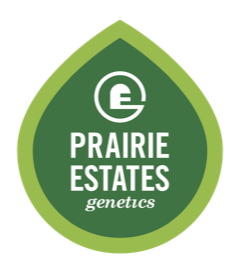The USDA plans to purchase $50 million worth of fluid milk for distribution to domestic food assistance programs, the agency announced on Aug. 14. These purchases will be separate from any USDA dairy product purchases under another program designed to provide financial assistance to dairy farmers negatively impacted by the ongoing tariff war with major U.S. dairy export customers.
The USDA purchases will include consumer-packaged whole, 2 percent, 1 percent and skim milk. Estimated milk volumes could total 12 million to 15 million gallons, depending on the prices agreed to by USDA and the milk suppliers. It marks the first time USDA has purchased fluid milk for domestic food assistance programs, according to the National Milk Producers Federation (NMPF).
“We are pleased that USDA is now including fluid milk in the assortment of foods it is buying and donating, as milk is in high demand at food banks because of its unparalleled nutritional benefits,” said Jim Mulhern, president and CEO of NMPF. “This effort will help more Americans meet their U.S. Dietary Guidelines-recommended daily consumption of milk. We appreciate this initial step and look forward to working with the department to continue building upon this effort.”
IDFA: Filling the hunger gap
“This purchase addresses one of our country’s significant challenges – hunger – and, at the same time, will have a positive impact on the dairy industry at a time of significant market uncertainty,” said Michael Dykes, International Dairy Foods Association (IDFA) president and CEO.
“As many as 41 million Americans, including nearly 13 million children, face hunger daily and are at risk of missing out on essential nutrients when they don’t have access to milk,” Dykes said. “Simply having more milk available for those in need can make a positive impact on public health.”
According to Feeding America, the monetary “meal gap,” or the resources to purchase enough food to meet the needs of those who face hunger, is $21 billion a year. And while consumers are generous with canned foods and dry goods, food banks only provide the equivalent of less than one gallon of milk per person per year.
“Milk is one of the most requested nutrition staples at food banks, yet it is rarely available,” said Julia Kadison, chief executive officer at MilkPEP. “And as one out of two kids ages 9 and up are falling short on calcium, vitamin D and potassium – essential nutrients that milk provides – there is an even greater need to make sure milk is getting to children and families who need it most.”
Working with states to determine need, the department will work with states through The Emergency Food Assistance Program (TEFAP) to provide the milk to programs and charities that assist struggling families.
To be eligible to submit offers, potential fluid milk contractors must meet USDA Ag Marketing Service (AMS) vendor qualification requirements. Details of these requirements, as well as access to submit bids, are available online. The USDA will offer informational webinars to dairy companies wishing to sell milk to the agency through this donation program. A pre-bid conference call will be held on Aug. 22.
Tariff aid details yet to be released
Discussions continue on how USDA will provide dairy assistance under the $12 billion USDA Commodity Credit Corporation trade mitigation program. Details are expected to be announced in September.
“NMPF has been sharing information with USDA about the best way to maximize the value of the farmer assistance program that will be implemented soon, and we are hopeful that the agency moves quickly to get resources in the hands of dairy farmers this fall,” Mulhern said. ![]()

-
Dave Natzke
- Editor
- Progressive Dairyman
- Email Dave Natzke






